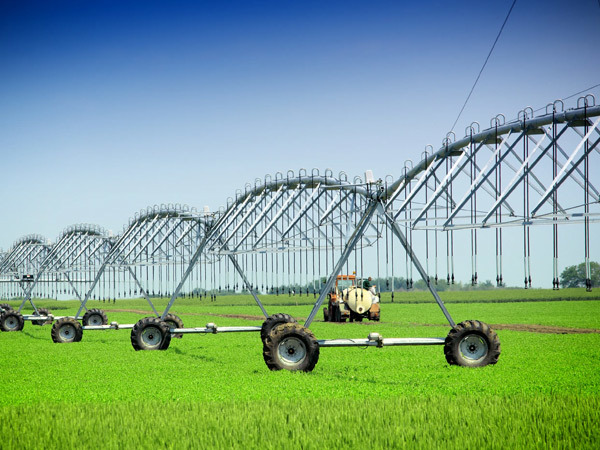Why Electric Center Pivot Irrigation is Essential for Modern Farming
Release time:
Sep 17,2025
Why Electric Center Pivot Irrigation is Essential for Modern Farming Introduction to Electric Center Pivot Irrigation Electric center pivot irrigation systems have revolutionized the agricultural landscape, offering a highly efficient method for watering crops. These systems utilize a rotating framework that distributes water evenly across a field, ensuring optimal growth conditions. As global dem
Why Electric Center Pivot Irrigation is Essential for Modern Farming
Introduction to Electric Center Pivot Irrigation
Electric center pivot irrigation systems have revolutionized the agricultural landscape, offering a highly efficient method for watering crops. These systems utilize a rotating framework that distributes water evenly across a field, ensuring optimal growth conditions. As global demands for food increase, farmers are seeking innovative ways to enhance productivity and sustainability. Electric center pivot irrigation stands out as a solution that addresses both concerns.
The Mechanism Behind Electric Center Pivot Irrigation
Electric center pivot irrigation systems consist of several key components that work together seamlessly to deliver water to crops.
How the System Works
At the core of this irrigation method is a long, rotating arm mounted on wheels, which travels around a central pivot point. Water is pumped through the system and distributed via a series of spray nozzles attached to the arm. This enables the system to cover a large area efficiently. The movement is powered electrically, reducing the need for manual labor and enhancing precision.
Advantages of Electric Center Pivot Irrigation
Electric center pivot irrigation systems offer numerous benefits, making them an essential tool for modern farming.
1. Increased Efficiency
With precise control over water application, electric center pivot irrigation minimizes waste. Farmers can set up the system to deliver the exact amount of water needed for different crops, which is especially vital in regions prone to drought.
2. Labor Savings
The automation provided by electric pivot systems significantly reduces the labor required for irrigation. Farmers can monitor and control the system remotely, allowing them to focus on other essential tasks.
3. Improved Crop Yields
By ensuring consistent and adequate watering, electric center pivot systems promote healthier plants and higher crop yields. This is particularly important in competitive markets where quality and quantity are crucial.
4. Sustainability and Environmental Impact
Electric center pivot irrigation contributes to sustainable agriculture by reducing water usage and minimizing runoff. This environmentally friendly approach aligns with the growing demand for sustainable farming practices.
Types of Electric Center Pivot Irrigation Systems
Farmers can choose from various types of electric center pivot irrigation systems based on their specific needs.
Standard Pivot Systems
These systems are the most commonly used and are ideal for large, flat fields. They provide even water distribution and are easy to operate.
Low-Profile Pivot Systems
Designed for fields with uneven terrain, low-profile pivots navigate obstacles such as hills and ditches effectively. Their versatility makes them suitable for various agricultural applications.
Variable Rate Irrigation Systems
These advanced systems utilize technology to vary water application rates across different sections of the field. This ensures that each crop receives the optimal amount of moisture, enhancing overall productivity.
Key Components of Electric Center Pivot Irrigation Systems
Understanding the components of these systems can help farmers make informed decisions when investing in irrigation technology.
Water Pumps
Efficient water pumps are crucial for delivering water to the pivot system. They must be powerful enough to maintain adequate pressure throughout the irrigation process.
Control Panels
Modern electric center pivot systems come with sophisticated control panels that allow farmers to monitor and adjust settings remotely. These panels enhance user experience and increase operational efficiency.
Spray Nozzles
The choice of spray nozzles directly impacts water distribution. Different crops may require specific nozzle types to achieve optimal results.
Installation and Maintenance of Electric Center Pivot Irrigation Systems
Proper installation and regular maintenance are critical for the longevity and effectiveness of electric center pivot irrigation systems.
Installation Process
Installing an electric center pivot system involves several steps, including site assessment, design, and assembly. Farmers should work with experienced professionals to ensure the system is tailored to their specific needs.
Regular Maintenance Tips
To keep the system operating efficiently, routine maintenance is essential. This includes checking for leaks, ensuring proper alignment, and regularly inspecting pumps and nozzles. Keeping the system clean and free of debris also enhances performance.
Cost Considerations and Return on Investment
Investing in electric center pivot irrigation can be significant, but the potential return on investment (ROI) is substantial.
Initial Costs
The initial costs for electric center pivot irrigation systems vary depending on the size of the field and the complexity of the system. While upfront costs may be high, the long-term benefits often outweigh these expenses.
Calculating ROI
Farmers should consider factors such as increased crop yields, reduced labor costs, and lower water usage when calculating ROI. Many farmers report a noticeable increase in profitability after implementing electric center pivot irrigation systems.
Case Studies: Successful Implementations of Electric Center Pivot Irrigation
Examining successful case studies can provide valuable insights into the effectiveness of electric center pivot irrigation.
Case Study 1: A Corn Farmer's Success Story
In a region facing severe drought conditions, a corn farmer implemented an electric center pivot system that improved water efficiency by 30%. This resulted in healthier crops and a significant increase in yield.
Case Study 2: A Sustainable Approach to Farming
Another case study highlights a farm that adopted electric center pivot irrigation as part of its sustainability initiatives. The farm reduced its water consumption by 40% while maintaining high crop yields, illustrating the system's environmental benefits.
Future Trends in Electric Center Pivot Irrigation
As technology continues to advance, the future of electric center pivot irrigation looks promising.
Integration of Smart Technology
The incorporation of smart technology, such as sensors and IoT devices, will further enhance the efficiency of electric center pivot systems. Farmers will be able to monitor soil moisture levels and adjust irrigation schedules accordingly.
Increased Customization
Future systems are likely to offer even more customization options, allowing farmers to tailor irrigation practices to specific crop needs and field conditions.
Conclusion
Electric center pivot irrigation is an essential element of modern farming, providing numerous benefits that enhance efficiency, sustainability, and crop yields. By investing in these systems, farmers can meet the growing demands for food production while adhering to environmentally friendly practices. As technology continues to evolve, electric center pivot irrigation will play a critical role in shaping the future of agriculture.
FAQs about Electric Center Pivot Irrigation
1. What is electric center pivot irrigation?
Electric center pivot irrigation is a method of watering crops using a rotating arm that distributes water evenly across a field while being powered by electricity.
2. How does electric center pivot irrigation enhance crop yields?
By delivering precise amounts of water to crops, electric center pivot irrigation ensures optimal growing conditions, leading to healthier plants and higher yields.
3. What are the environmental benefits of electric center pivot irrigation?
This irrigation method reduces water waste, minimizes runoff, and promotes sustainable farming practices, making it beneficial for the environment.
4. Can electric center pivot irrigation be used on uneven terrain?
Yes, low-profile pivot systems are specifically designed to navigate uneven terrain, making them suitable for a variety of agricultural landscapes.
5. How much water can electric center pivot irrigation save?
Farmers using electric center pivot irrigation often report water savings of up to 30-40%, depending on the specific system and field conditions.
Learn more about industry dynamics
New customers enjoy 10% product discount
PRODUCT CENTER
CONTACT US
Address: 2-1-2301, Phoenix International Plaza, High-tech Zone, Jinan City, Shandong Province
Quality of service to win customer satisfaction


Shandong Yihe Agricultural Technology Co., Ltd.




